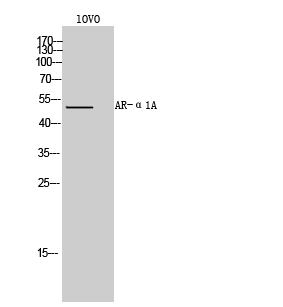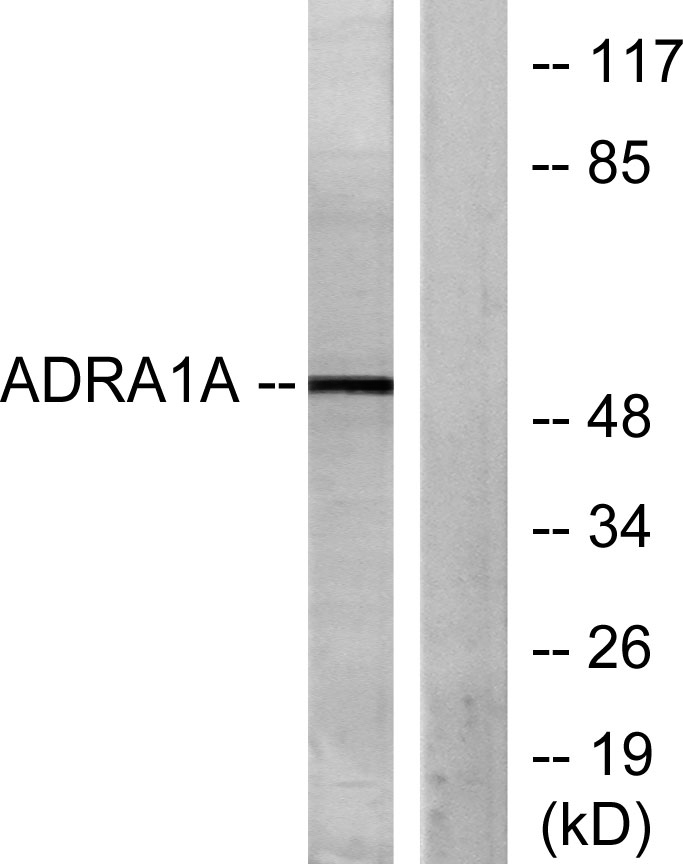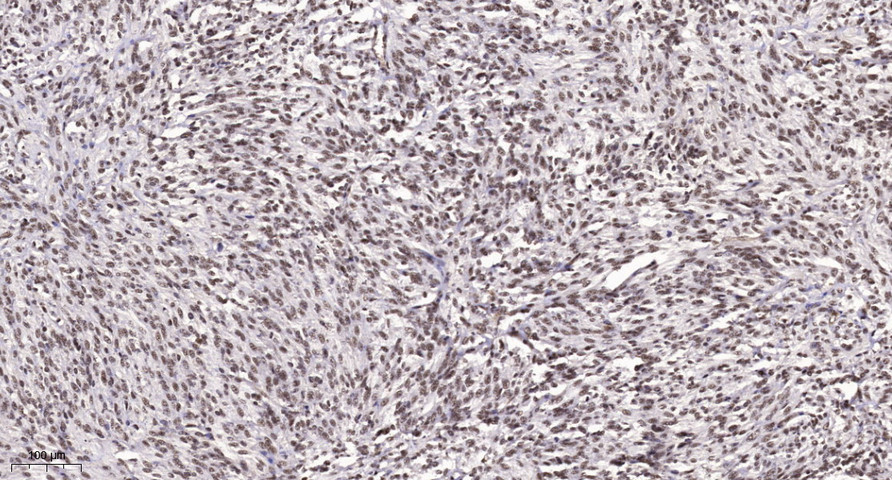AR-α1A Polyclonal Antibody
- Catalog No.:YT0355
- Applications:WB;IHC;IF;ELISA
- Reactivity:Human;Rat;Mouse;
- Target:
- AR-α1A
- Fields:
- >>Calcium signaling pathway;>>cGMP-PKG signaling pathway;>>Neuroactive ligand-receptor interaction;>>AMPK signaling pathway;>>Adrenergic signaling in cardiomyocytes;>>Vascular smooth muscle contraction;>>Salivary secretion
- Gene Name:
- ADRA1A
- Protein Name:
- Alpha-1A adrenergic receptor
- Human Gene Id:
- 148
- Human Swiss Prot No:
- P35348
- Mouse Swiss Prot No:
- P97718
- Immunogen:
- The antiserum was produced against synthesized peptide derived from human ADRA1A. AA range:341-390
- Specificity:
- AR-α1A Polyclonal Antibody detects endogenous levels of AR-α1A protein.
- Formulation:
- Liquid in PBS containing 50% glycerol, 0.5% BSA and 0.02% sodium azide.
- Source:
- Polyclonal, Rabbit,IgG
- Dilution:
- WB 1:500 - 1:2000. IHC 1:100 - 1:300. IF 1:200 - 1:1000. ELISA: 1:10000. Not yet tested in other applications.
- Purification:
- The antibody was affinity-purified from rabbit antiserum by affinity-chromatography using epitope-specific immunogen.
- Concentration:
- 1 mg/ml
- Storage Stability:
- -15°C to -25°C/1 year(Do not lower than -25°C)
- Other Name:
- ADRA1A;ADRA1C;Alpha-1A adrenergic receptor;Alpha-1A adrenoreceptor;Alpha-1A adrenoceptor;Alpha-1C adrenergic receptor;Alpha-adrenergic receptor 1c
- Observed Band(KD):
- 51kD
- Background:
- Alpha-1-adrenergic receptors (alpha-1-ARs) are members of the G protein-coupled receptor superfamily. They activate mitogenic responses and regulate growth and proliferation of many cells. There are 3 alpha-1-AR subtypes: alpha-1A, -1B and -1D, all of which signal through the Gq/11 family of G-proteins and different subtypes show different patterns of activation. This gene encodes alpha-1A-adrenergic receptor. Alternative splicing of this gene generates four transcript variants, which encode four different isoforms with distinct C-termini but having similar ligand binding properties. [provided by RefSeq, Jul 2008],
- Function:
- function:This alpha-adrenergic receptor mediates its action by association with G proteins that activate a phosphatidylinositol-calcium second messenger system. Its effect is mediated by G(q) and G(11) proteins.,PTM:Carboxyl-terminal Ser or Thr residues may be phosphorylated.,similarity:Belongs to the G-protein coupled receptor 1 family.,tissue specificity:Heart, brain, liver and prostate, but not in kidney, lung, adrenal, aorta and pituitary. Isoform 4 is the most abundant isoform expressed in the prostate with high levels also detected in liver and heart.,
- Subcellular Location:
- Nucleus membrane; Multi-pass membrane protein. Cell membrane ; Multi-pass membrane protein . Cytoplasm . Membrane, caveola . Location at the nuclear membrane facilitates heterooligomerization and regulates ERK-mediated signaling in cardiac myocytes. Colocalizes with GNAQ, PLCB1 as well as LAP2 at the nuclear membrane of cardiac myocytes.
- Expression:
- Expressed in heart, brain, liver and prostate, but not in kidney, lung, adrenal, aorta and pituitary. Within the prostate, expressed in the apex, base, periurethral and lateral lobe. Isoform 4 is the most abundant isoform expressed in the prostate with high levels also detected in liver and heart.
- June 19-2018
- WESTERN IMMUNOBLOTTING PROTOCOL
- June 19-2018
- IMMUNOHISTOCHEMISTRY-PARAFFIN PROTOCOL
- June 19-2018
- IMMUNOFLUORESCENCE PROTOCOL
- September 08-2020
- FLOW-CYTOMEYRT-PROTOCOL
- May 20-2022
- Cell-Based ELISA│解您多样本WB检测之困扰
- July 13-2018
- CELL-BASED-ELISA-PROTOCOL-FOR-ACETYL-PROTEIN
- July 13-2018
- CELL-BASED-ELISA-PROTOCOL-FOR-PHOSPHO-PROTEIN
- July 13-2018
- Antibody-FAQs
- Products Images

- Western Blot analysis of lOVO cells using AR-α1A Polyclonal Antibody

- Western blot analysis of lysates from lOVO cells, using ADRA1A Antibody. The lane on the right is blocked with the synthesized peptide.

- Immunohistochemical analysis of paraffin-embedded human Small intestinal stromal tumor. 1, Tris-EDTA,pH9.0 was used for antigen retrieval. 2 Antibody was diluted at 1:200(4° overnight.3,Secondary antibody was diluted at 1:200(room temperature, 45min).



